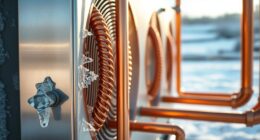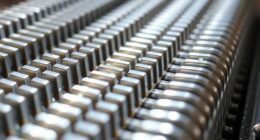Are you exhausted from being stuck with high energy bills? We understand. That’s why we have compiled a list of the most effective tips for using your heat pump energy efficiently.
With our expert tips, you can break free from the chains of wastefulness and embrace a more sustainable lifestyle. From understanding efficiency ratings to integrating smart thermostats, we’ll show you how to harness the power of your heat pump while saving both energy and money.
Get ready to experience true freedom in your energy consumption.
Key Takeaways
- Understanding heat pump efficiency ratings (SEER and HSPF) is important for maximizing energy efficiency.
- Proper sizing of heat pumps is crucial for optimal performance and energy consumption.
- Regular maintenance practices, such as cleaning air filters and checking electrical connections, can improve heat pump efficiency.
- Integrating smart thermostats and utilizing renewable energy sources can further enhance energy savings and reduce carbon emissions.
Understanding Heat Pump Efficiency Ratings
Let’s start by examining the different heat pump efficiency ratings to gain a better understanding of how they impact energy usage.

Heat pump performance is measured by two main ratings: Seasonal Energy Efficiency Ratio (SEER) and Heating Seasonal Performance Factor (HSPF).
SEER measures the cooling efficiency of a heat pump, while HSPF measures its heating efficiency.
Both ratings are important in determining the overall energy consumption of a heat pump.
The higher the SEER and HSPF ratings, the more energy-efficient the heat pump is, resulting in lower energy consumption and reduced utility bills.

It’s essential to consider these efficiency ratings when selecting a heat pump to ensure optimal energy savings.
Proper Heat Pump Sizing for Optimal Performance
To ensure optimal performance, we need to properly size the heat pump for our specific heating and cooling needs.
Heat pump installation is a critical step in achieving energy efficient design.
Proper sizing involves considering factors such as the size of the space to be heated or cooled, the climate conditions, and the insulation of the building.

Oversized or undersized heat pumps can lead to decreased efficiency, increased energy consumption, and inadequate comfort levels.
An oversized heat pump may short cycle, turning on and off frequently, which not only wastes energy but also puts unnecessary strain on the system.
On the other hand, an undersized heat pump may struggle to reach the desired temperature, resulting in insufficient heating or cooling.
Implementing Effective Heat Pump Maintenance Practices
We should follow five key maintenance practices to ensure the efficient operation and longevity of our heat pump.
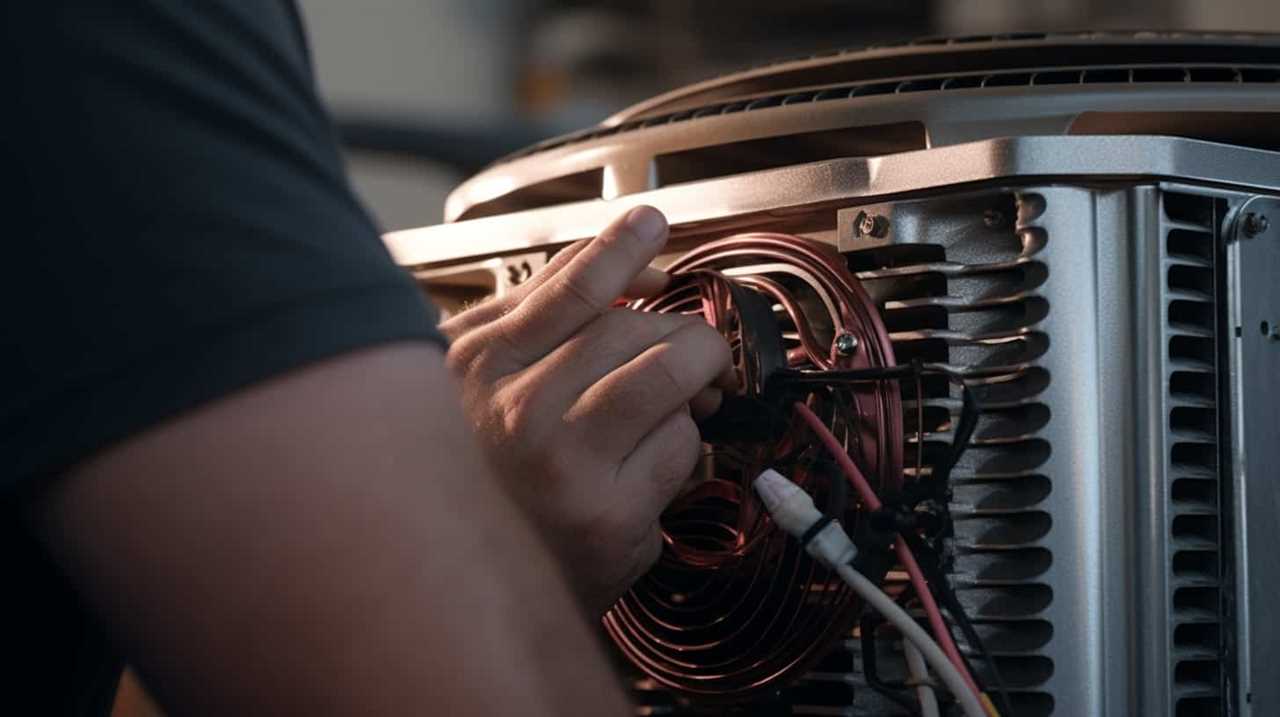
First, regular cleaning of the air filters is essential to prevent airflow blockage and maintain optimal performance.
Second, inspecting and cleaning the outdoor unit regularly will help maximize heat transfer efficiency.
Third, checking and tightening electrical connections ensures safe and reliable operation.
Fourth, lubricating the motor and other moving parts reduces friction and increases energy efficiency.
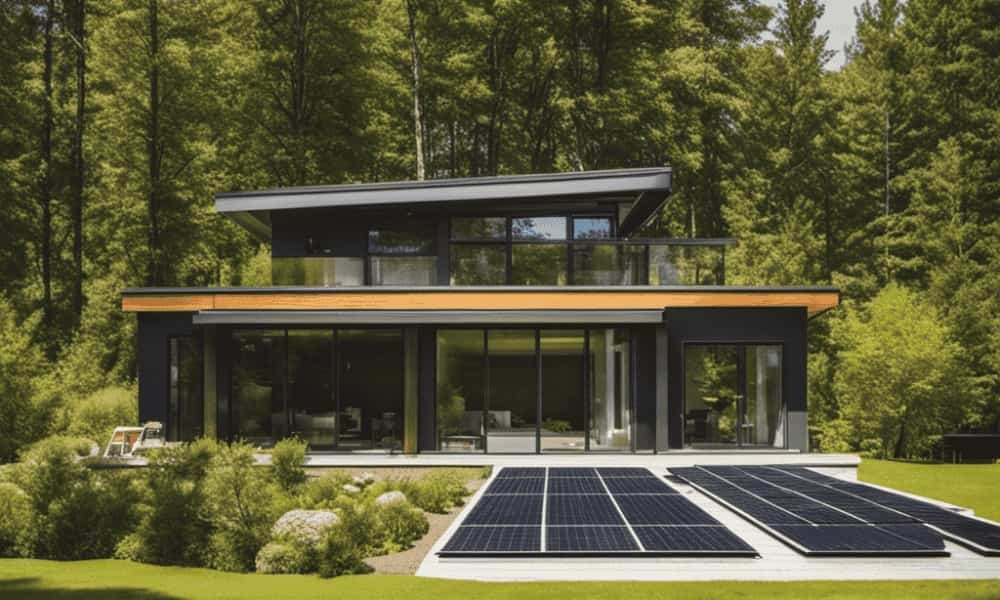
Finally, scheduling professional maintenance, including heat pump troubleshooting, at least once a year is crucial to detect and address any potential issues before they escalate.
Smart Thermostat Integration for Energy Savings
By integrating smart thermostats into our heating system, we can optimize energy savings and enhance overall efficiency. Smart thermostats offer advanced features that allow for precise control and customization of temperature settings, resulting in significant energy management techniques. These devices use sensors and algorithms to learn our heating preferences and adjust accordingly, ensuring optimal comfort while minimizing energy consumption. Additionally, smart thermostats can be programmed to automatically adjust temperatures based on occupancy patterns and weather conditions, further optimizing heat pump performance.
To illustrate the benefits of smart thermostat integration, consider the following table:
| Feature | Benefits |
|---|---|
| Remote control | Adjust settings from anywhere, maximizing convenience |
| Energy usage monitoring | Track and analyze energy consumption for better control |
| Smart scheduling | Set customized heating schedules for different zones |
| Weather integration | Adjust temperature settings based on local weather |
| Energy-saving tips | Receive recommendations to further reduce energy usage |
Utilizing Renewable Energy Sources to Power Heat Pumps
Renewable energy sources such as solar power and geothermal energy can be harnessed to efficiently power heat pumps. By utilizing these sustainable energy sources, we can greatly reduce carbon emissions and maximize energy savings.
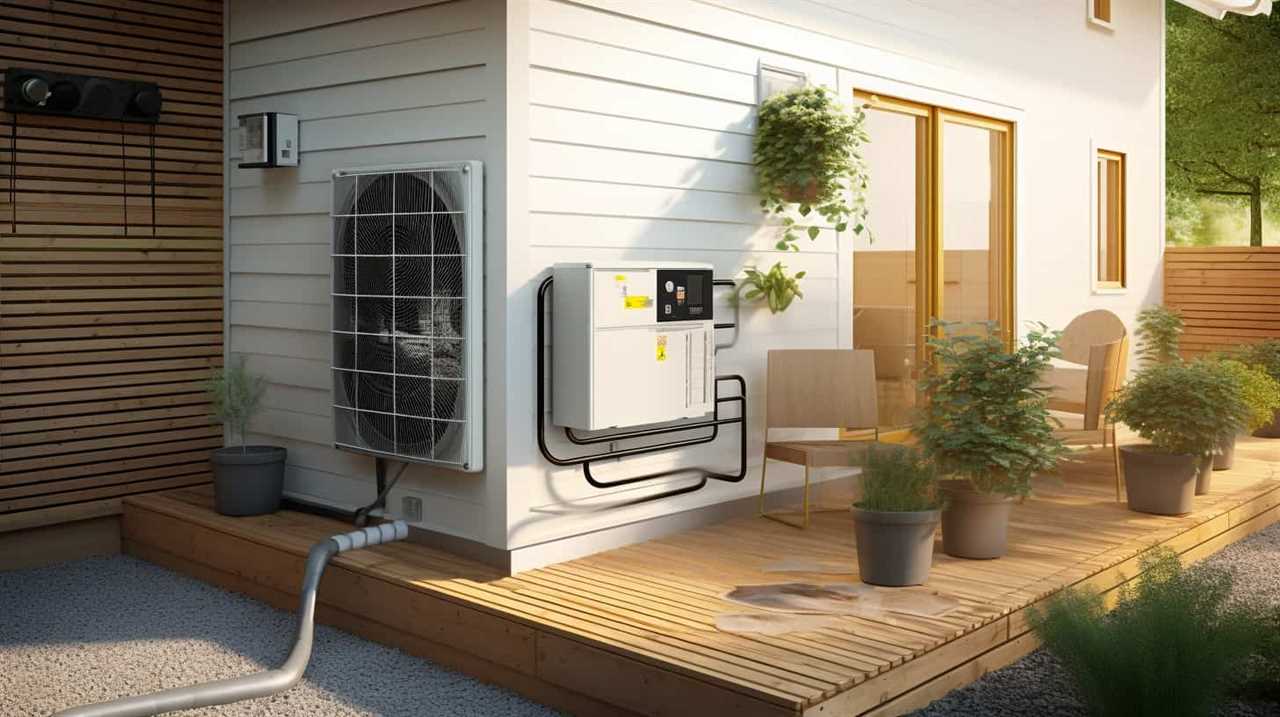
Here are four key reasons why utilizing renewable energy sources is beneficial for powering heat pumps:
-
Environmental Impact: Renewable energy sources produce little to no greenhouse gas emissions, making them a cleaner alternative to fossil fuels. This helps in reducing carbon emissions and combating climate change.
-
Cost Savings: Solar power and geothermal energy are abundant and free resources. By harnessing these energy sources to power heat pumps, homeowners can significantly reduce their energy bills and save money in the long run.
-
Energy Independence: By generating renewable energy on-site, homeowners can become less reliant on traditional energy sources and have more control over their energy consumption. This promotes freedom and self-sufficiency.

-
Long-term Sustainability: Unlike fossil fuels, renewable energy sources are renewable and will never run out. By investing in renewable energy to power heat pumps, we can ensure a sustainable and secure energy future for generations to come.
Incorporating renewable energy sources into heat pump systems is a smart and responsible choice, offering both environmental and financial benefits.
Frequently Asked Questions
What Are the Different Types of Heat Pump Efficiency Ratings and How Do They Affect Energy Consumption?
Heat pump efficiency ratings and their impact on energy consumption vary. Understanding the different types of ratings, such as SEER, HSPF, and COP, helps homeowners make informed decisions to optimize efficiency and reduce energy usage.
How Can I Determine the Appropriate Size of a Heat Pump for My Home to Ensure Optimal Performance?
Determining the right size heat pump for optimal performance is crucial. It’s a balancing act between efficiency and power. Oversized units waste energy, undersized ones struggle to meet demand. Accurate sizing ensures comfort and efficiency.

What Are Some Commonly Overlooked Maintenance Practices That Can Significantly Improve the Efficiency of a Heat Pump?
Improving heat pump efficiency involves regular maintenance. Some commonly overlooked maintenance practices include cleaning or replacing air filters, checking refrigerant levels, and ensuring proper airflow. These tips can significantly improve the efficiency of your heat pump.
Can a Smart Thermostat Really Save Energy When Used With a Heat Pump, and How Does It Work?
A smart thermostat can save energy when used with a heat pump. It optimizes energy savings by adjusting the temperature based on occupancy and weather conditions. However, limitations include compatibility and user behavior.
What Are the Benefits and Challenges of Using Renewable Energy Sources, Such as Solar or Geothermal Power, to Run a Heat Pump?
Using renewable energy sources like solar or geothermal power for heat pumps offers numerous benefits, such as reduced reliance on fossil fuels and lower carbon emissions. However, challenges include initial installation costs and potential limitations in certain geographic areas.
Conclusion
In conclusion, understanding heat pump efficiency ratings, proper sizing, maintenance practices, smart thermostat integration, and utilizing renewable energy sources are all crucial strategies for maximizing energy efficiency in heat pump usage.

One interesting statistic to note is that by implementing these authentic strategies, homeowners can potentially save up to 50% on their heating and cooling energy costs.
By taking these steps, we can’t only reduce our environmental impact but also save money in the long run.






